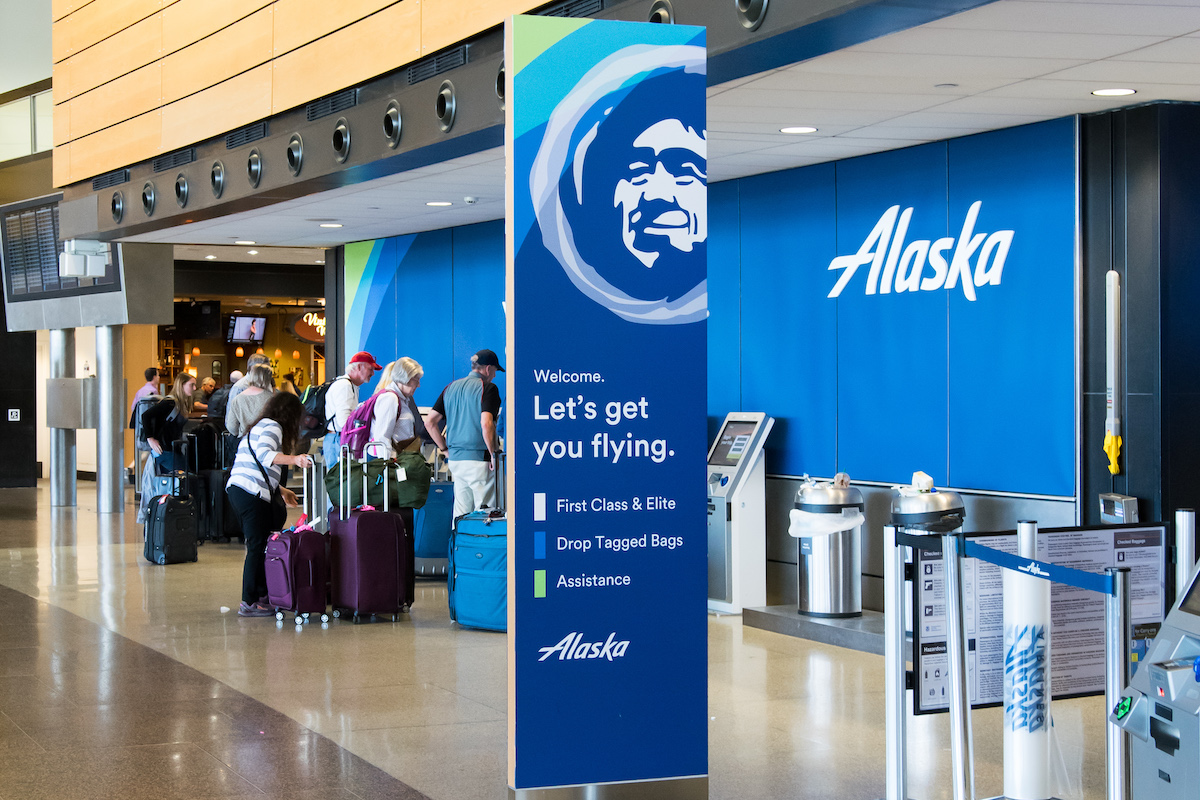Alaska Airlines Sees Big Rebound in Tech Business Travel

Photo Credit: Flickr / Joe A. Kunzler Photo
Tech companies are making a big return to business travel, with Alaska Airlines and others reporting a significant uptick in corporate bookings in recent weeks.
“There's just been this material, as in a 50-point change, in booking levels for some of these big [tech] guys in the last few weeks," Alaska Chief Commercial Officer Andrew Harrison said during the airline's first-quarter earnings call on April 21. He did not name names but given Alaska's headquarters in Seattle and hub in San Francisco, these companies likely include industry heavyweights like Amazon, Facebook, and Microsoft.
The return of these corporate flyers is very good news for the industry. The business travel recovery as a whole has lagged behind leisure flyers, who have come back in droves since the summer of 2020. But although holidaygoers and those visiting friends and relatives have helped fill aircraft, they have done so at lower fares than are typically paid by road warriors. This has made the return of corporate travel one of the biggest watched items for airlines, and the return the big tech firms a significant hurdle for carriers like Alaska and United Airlines, which rely heavily on demand in the major tech hubs.
Roughly 70 percent of 2019 corporate demand has returned, Alaska CEO Ben Minicucci said. This compares with the already fully recovered leisure segment at the airline. And Harrison said the return of business travelers helped drive yield improvements in the first quarter, when they rose to up 9 percent in March compared with three years earlier from an average of up 3.5 percent across the entire three-month period.
Alaska’s new codeshare with American Airlines and membership in the Oneworld alliance have “opened up a lot of doors" for new corporate customers, said Harrison. However, he could not say how much this benefitted Alaska in the first quarter, and said he anticipated a clearer view by the September quarter.
Alaska is not alone in seeing business travelers flock back to the skies. Systemwide corporate demand at American hit 80 percent in the first quarter, and is forecast to rise to 90 percent by June. Similarly, United executives have said business demand was 70 percent of 2019 levels in the first quarter, but had risen to 80 percent by March.
But even as road warriors return, staffing constraints have put the brakes on Alaska's recovery. The airline plans to fly 6-9 percent less passenger capacity than in 2019 during the second quarter, and revised down its full-year capacity outlook to flat to down 3 percent year-over-three-years from up 1-3 percent just a month ago. The main issue is pilot staffing and training that bubbled over into a higher number of flight cancellations at Alaska earlier in April.
“It’s a question of how we get the pilots through the schoolhouse, and out on the line," said Minicucci. Alaska is meeting its target of hiring 600 mainline pilots and a "couple of hundred" for its regional subsidiary Horizon Air this year, he added.
Alaska is confident in the supply of new pilots, said Minicucci. The airline has roughly 500 trainees working through in its existing pipeline, which includes the recently opened Ascend Pilot Academy flight training school and other pathway programs. In addition, Alaska backs efforts by Airlines for America (A4A), the Regional Airline Association (RAA), and other trade groups to boost federal financial assistance for pilot training.
"Now, you have to take destiny into your own hands," said Minicucci of airlines' pilot supply efforts.
Alaska reported a net loss of $143 million in the first quarter. Revenues were down 10 percent to $1.7 billion on a nearly 2 percent increase in expenses to $1.9 billion compared to 2019. Executives attributed the increase primarily to $75 million in charges related to the early retirement of Alaska's Airbus A320s, as well as higher labor costs. Unit revenues increased less than 1 percent year-over-three-years on a 17 percent increase in unit costs excluding fuel. Alaska paid an average of $2.62 per gallon for fuel in the first quarter, up 16 percent from the fourth quarter.
Looking ahead, Alaska maintains its forecast of profits in the second quarter and for the full year. Total revenues are forecast to increase 5-8 percent compared to 2019 in the second quarter, though unit costs excluding fuel are expected to jump 16-19 percent year-over-three-years. Fuel expenses are forecast to rise at least 14 percent from the first quarter.
